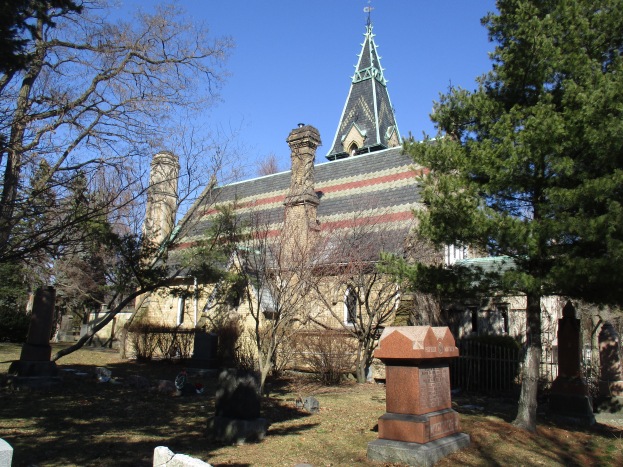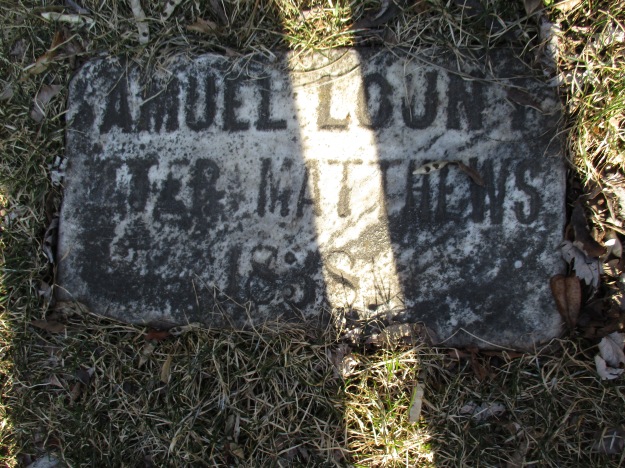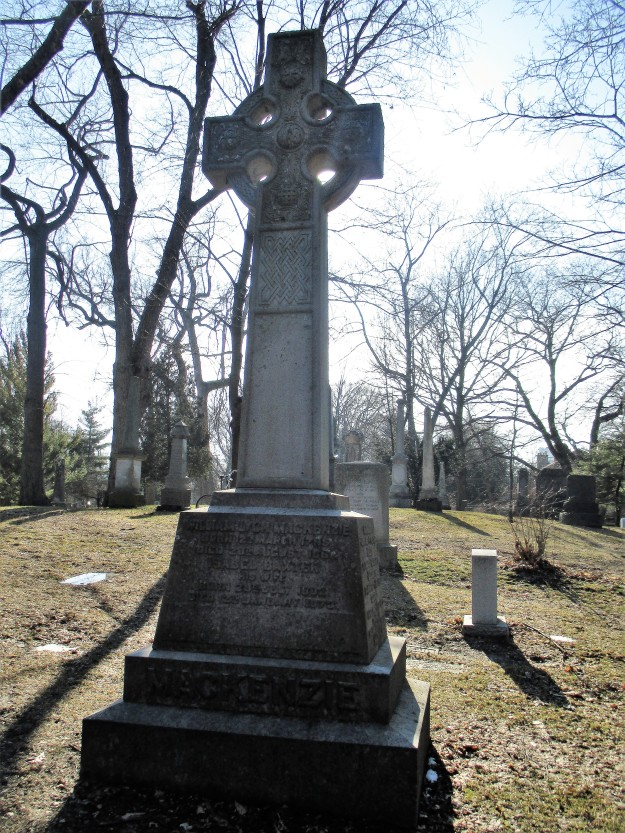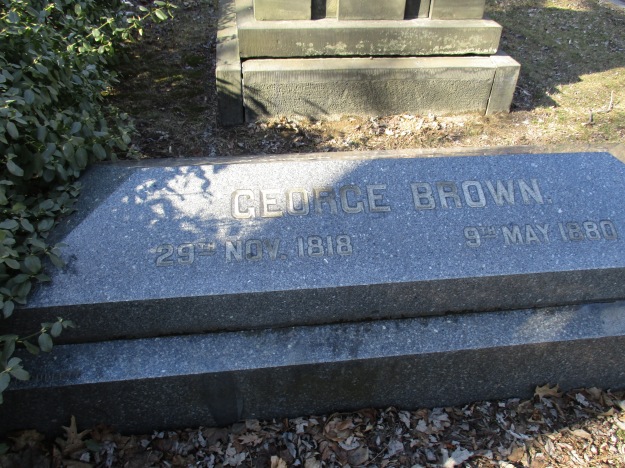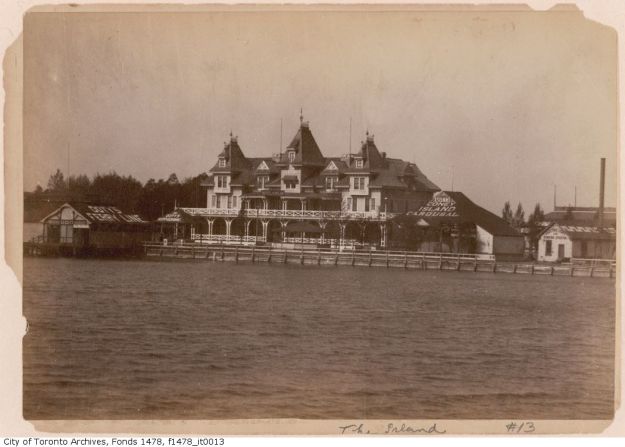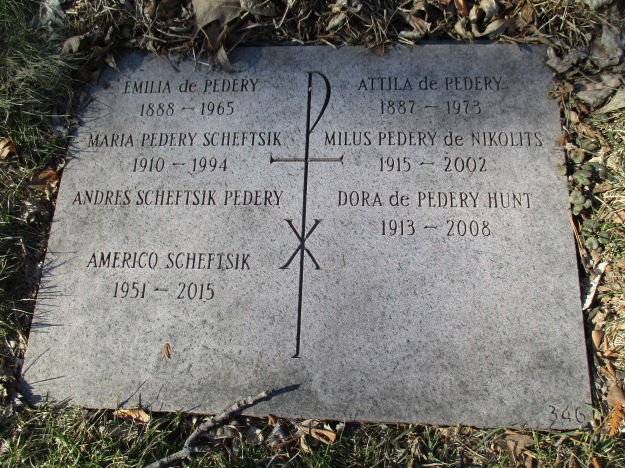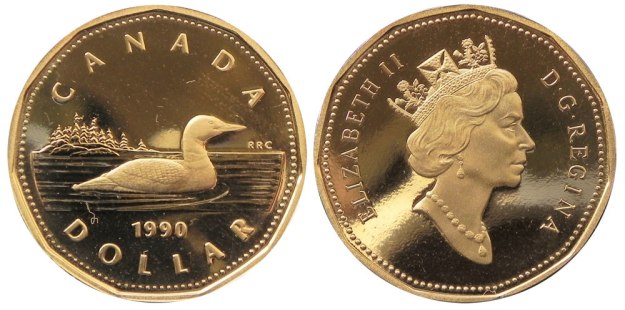Thursday, December 7, 2017
In the course of Hiking the GTA we have come across William Lyon Mackenzie several times. December 7th, 2017 will be the 180th anniversary of the failure of his dream to overthrow British colonial rule.
Mackenzie was born near Dundee, Scotland on March 12, 1795. William was born into the clan Mackenzie and both of his grandfathers had fought in the uprising of 1745 when the Scottish Highlanders fought unsuccessfully behind Prince Charles Stuart in an attempt to put a Scottish King back on the throne. At the age of 25, he immigrated to Upper Canada and moved into the house pictured below in Queenston. On April 18, 1824, he planted 5 Honey Locust trees to mark the launch of his newspaper The Colonial Advocate. Two of the trees survive and one is visible behind the chimney on the left. The Colonial Advocate became a prime voice for the reform movement in Upper Canada and was highly critical of the ruling elect whom he berated with scathing personal attacks.

Mackenzie moved to York (Toronto) in 1825 and continued to publish the Colonial Advocate. It was so unpopular with the aristocracy that on June 8, 1826, several well-placed young men broke into his print shop and wrecked his printing press. Then they carried his type down to the bay and threw it in. This incident became known as the Types Riots and was used by Mackenzie to gain support for his reform movements. The type in the picture below was photographed at the Mackenzie House Museum and is typical of what was thrown in the bay. Capital letters were stored in the case on the top while small letters were stored in the case on the bottom. From this, we derive the term upper case and lower case letters.

Mackenzie was elected in 1831 and carried his reform attitude into the House of Assembly where it continued to get him in trouble. He was expelled from the assembly 5 times between 1831 and 1834 but was re-elected every time. York was incorporated as a city in 1834 and the name was changed to Toronto. Elections were held to select the first mayor of the new city and Mackenzie won. The following year he ran for the Assembly again and this time a majority of reformers were elected. David Gibson was one of Mackenzie’s most consistent followers and was also elected. Gibson was a surveyor and had named the town of Willowdale at modern Yonge and Shepherd. His house was a common meeting place for Mackenzie and his rebels as they convinced themselves that the political process would never work and an open rebellion was required. Gibson would later have a price put on his head for his part in the rebellion. He would escape to the USA but his property was confiscated and the house and barns burned by the government in retaliation. The current Gibson house was built upon his return in 1851 and operates as a museum hidden among the highrises of North York.

Sir Francis Bond Head had moved the troops from Fort York to present day Quebec to put down the rebellion that was taking place in Lower Canada. He didn’t think Mackenzie was capable of mounting an armed rebellion but he had dropped the word Colonial from his newspaper as the Advocate because he was no longer thinking in terms of being a colony. The Draft Constitution for the Independent State of Upper Canada was presented at a meeting on November 18th, 1837 and a date of December 7th set for the uprising. On December 4th Mackenzie arrived at Gibson’s house to find that Samuel Lount had left Holland Landing with his supporters and was on his way to Montgomery’s Tavern, ahead of schedule. This tavern was the second one on the site just north of Yonge and Eglinton and would have appeared as it did in this contemporary sketch of the death of Lt. Col. Robert Moodie. Moodie had tried to force the rebel lines at the tavern on December 4th and when he drew his pistol he was met with four rifle shots and later died of his wounds.

Meanwhile, John Powell, one of the ruling Family Compact, had attempted to kill Mackenzie but was captured when his gun misfired. Mackenzie, along with his military leader Anthony Anderson, wanted to appear to be gentlemen and so they accepted Powell’s word that he was unarmed. Powell later shot and killed Anderson and made his escape. Anderson had military experience and his loss was critical for the rebels. The following day Samuel Lount, Mackenzie and a detachment of men set out down Yonge Street. Sheriff Willliam Jarvis and 27 men armed with muskets were hiding in William Sharpe’s garden (now the site of Maple Leaf Gardens). That evening the Tory muskets fired into the darkness and the front row of rebels answered in kind. They dropped to their knees so the men behind could fire over their heads but these militias thought their comrades were shot. Once they fled the battle was over quickly but Lount had been captured.
By December 6th the rebel forces were discouraged and becoming outnumbered. To prevent British support from arriving from Kingston or Lower Canada it was decided to burn the Queen Street bridge over the Don River. Peter Matthews and 60 men set out to do this but they failed and Matthews was captured. December 7th was revolution day and Mackenzie was determined to carry on. He rallied his forces at Montgomery’s Tavern and prepared to march into the city. However, Lieutenant Governor Bond Head had moved north with his cannon and opened fire. When cannonballs started crashing through the tavern the rebels scattered. Bond Head watched as the tavern was torched and Montgomery arrested. The tavern was later replaced with another one that burned down in 1881. The land was then sold to John Oulcott who built a three-story brick hotel. It later served as the North Toronto post office from 1890 until it was torn down in the 1930’s. Postal Station K was opened in 1936 and bears the inscription EviiiR for Edward viii, King of Canada. Very few public buildings were erected during his 11-month reign and this is perhaps the only one in Toronto. Today the old post office is being incorporated into a new condo tower.

With the end of the rebellion came a period of retribution. Most of the rebels attempted to make their way to the United States. Mackenzie had a 1000 pound price on his head and so he made his way from farm to farm being hidden by his supporters.

In all, 25 people were executed in Upper Canada following the rebellion. Samuel Lount and Peter Matthews were the only two in Toronto, both of them at the Don Jail. They were buried in the Potter’s Field at Yonge and Bloor where all hanged people were interred. One hundred and fifty men were sentenced to banishment in Tasmania and Australia. In February 1849 a general amnesty was granted and many started to return to Canada. The picture below shows the Devil’s Cave where Mackenzie is said to have hidden during his flight to the States.

Upon his return to Canada in 1849 he resumed his political life and went back to publishing his newspapers. He was given the house at 82 Bond Street where he spent the remainder of his days. The house was originally the middle of three townhouses that were built in 1858. In 1936 the house was saved from demolition because of its historic value. Mackenzie’s daughter married into the King family and when she had a son she named after her father. William Lyon Mackenzie King was Canada’s longest serving Prime Minister and the one that guided us through the Second World War. He was in office at the time that the house was preserved. Today it houses a museum and a print shop similar to the one that Mackenzie had when he lived in the house.

William Lyon Mackenzie was instrumental in having the remains of Samuel Lount and Peter Matthews removed from their common grave in the potter’s field when that cemetery was closed. They were reinterred at The Necropolis. Mackenzie would be buried there himself when he passed away on August 28th, 1861 of an apoplectic seizure.

The cover picture shows the memorial to Mackenzie that stands on the west side of Queens Park. Before he passed away Mackenzie got to witness the establishment of a system of responsible government. His life struggle had not been in vain.
Further reading:
The Firebrand – William Kilbourn contains Mackenzie’s own account of the rebellion.
1837 Rebellion A Tour Of Toronto and Nearby Places – Mark Frank has walking tours of the various points of interest.
Like us at http://www.facebook.com/hikingthegta
Follow us at http://www.hikingthegta.com

